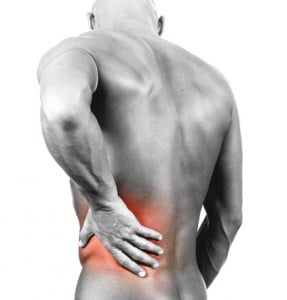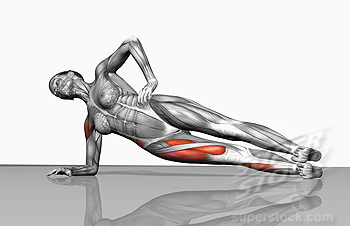Golf is a sport that’s easy to fall in love with, but every regular golfer knows it can be a real pain, literally. There are numerous golf injuries that can result from a faulty swing, bad biomechanics, overuse, and poor physical conditioning. Statistically proven, the most common amateur golf injury is sustained in the low back region. Although injuries are commonly seen in the joints and discs of the spine, the most common back injury in golf are strains of the muscles and soft tissue surrounding the spine.
There are many different predictors of low back pain. Some predictors include poor joint mobility, shortened muscle lengths, abnormal body composition, and poor pelvic and core stability. Not having the ability to stabilize the body’s core and low back can be very detrimental to spine health and the golf swing. It leads to faulty biomechanics which in turn will lead to faulty swing mechanics. Many amateur golfers mask poor spine stability and weaknesses by deviating away from proper swing technique to achieve the feeling of a full swing. Doing this time and time again, round after round, can be detrimental to the spine and can make golf a debilitating sport to play.
One fitness predictor of low back pain is poor endurance in the side plank position. The side plank is a great exercise to challenge your core and the stabilizers of the lumbar spine. To perform the side plank, start by lying on your left side with your feet on top of each other and your left elbow directly under your left shoulder. From here, make sure that your top ear, shoulder, hip, knee, and ankle are aligned and form a straight line. Once that is determined, slowly lift your hips off the ground until your spine is completely straight and your body is aligned and symmetrical. Keep your top shoulder back by pinching your shoulder blades together. Hold for as long as you can. You know you’re done the set once you can no longer hold your hips up to where you first started, or you begin to rotate the shoulders and torso forward or back.
This exercise is about quality, not quantity! Make sure you can hold for an equal amount of time on both sides. Golfers that suffer from low back pain tend to have a large disparity in endurance time from left side to right (generally a right handed golfer can hold the left side longer). Only do as much on one side as you can do on the other. Record your times and challenge yourself each time you do this exercise by pushing to get a couple of additional seconds. Just remember, quality is the name of this game! Don’t sacrifice form for a couple of extra seconds.

So give the side plank a try to evaluate your core and low back stability. Improvement in this position can relieve pre-existing low back pain, prevent faulty biomechanics that will lead to new pain, and improve the golf swing as a whole.
If you have any questions about the Side Plank exercise or low back pain in golf please contact me, Jason Rivkin, by email at [email protected].
If you try these exercises and you find them to be too challenging or uncomfortable, do not continue, until you have consulted with your physician. All exercises for golf should be customized to your needs after a proper evaluation.
Come In and See Us
Want to take your golf to the next level? Our FitGolf® Trainers are experts at working one-on-one with you to tailor a training program to meet the specific needs of your body and help you achieve the results you are hoping to see in your golf.
Want More Resources?
Looking for more exercise resources, blog posts or monthly golf-specific exercise content sent straight to your inbox?
